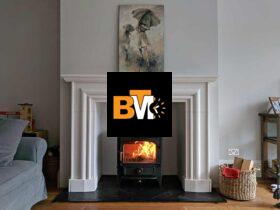Introduction:
Improving your home’s efficiency is one of the best ways to reduce energy consumption, lower utility bills, and create a more comfortable living environment. Whether you’re looking to cut down on energy waste, enhance insulation, or invest in smarter heating and cooling solutions, simple upgrades can make a big difference. By making minor adjustments to your home, you can improve its performance while minimizing your carbon footprint.
Many homeowners assume that increasing home efficiency requires significant renovations, but that is not always the case. Small upgrades such as improving insulation, switching to energy-efficient lighting, and optimizing heating systems can greatly enhance energy conservation. The goal is to make your home function more effectively with less energy waste while maintaining a comfortable indoor environment throughout the year. This guide explores practical upgrades that will help improve home efficiency and maximize savings.
Upgrading to energy-efficient lighting for lower energy consumption:
Switching to energy-efficient lighting is one of the easiest ways to improve home efficiency. Traditional incandescent bulbs consume a lot of electricity and generate excess heat, making them inefficient compared to modern lighting options.
LED and CFL bulbs use significantly less energy while providing the same or even better illumination. These energy-saving alternatives last longer, reducing the frequency of replacements. By upgrading your home’s lighting, you can cut down on electricity usage without sacrificing brightness or style.
- Benefits of energy-efficient lighting:
- Reduces energy consumption and lowers electricity bills.
- Provides longer-lasting illumination, reducing replacement costs.
- Produces less heat, improving indoor temperature regulation.
- Available in various brightness levels and color temperatures.
Sealing air leaks and improving insulation for better temperature control:
One of the biggest contributors to energy waste is air leaks. Gaps around windows, doors, and vents allow heated or cooled air to escape, making your HVAC system work harder to maintain indoor comfort.
Sealing these leaks with weatherstripping or caulking prevents unnecessary energy loss. Additionally, improving insulation in key areas like attics, walls, and basements helps regulate temperature more efficiently. With proper insulation, your home will retain heat in winter and stay cooler in summer, reducing the strain on heating and cooling systems.
- Ways to seal air leaks and improve insulation:
- Apply weatherstripping around doors and windows to prevent drafts.
- Use caulk to seal cracks and gaps in walls, ceilings, and floors.
- Upgrade attic and wall insulation to enhance heat retention.
- Install insulated curtains or blinds to prevent heat loss through windows.
Installing smart thermostats for optimized heating and cooling:
A smart thermostat is a game-changer when it comes to home efficiency. Unlike traditional thermostats, smart models allow homeowners to set schedules and adjust temperatures remotely. They also learn household habits and make automatic adjustments to optimize energy use.
By programming a smart thermostat to reduce heating and cooling when no one is home, you can significantly cut down on energy waste. Some models provide energy reports, helping you track and improve your home’s efficiency.
- Advantages of smart thermostats:
- Automatically adjusts temperatures based on your routine.
- Reduces energy waste and lowers heating and cooling costs.
- Allows remote control via smartphone apps.
- Provides real-time energy usage insights for better efficiency.
Upgrading windows and doors to reduce energy loss:
Old or poorly insulated windows and doors are common sources of heat loss in homes. Replacing them with energy-efficient models can drastically improve temperature control and lower energy costs.
Double-glazed or Low-E windows provide better insulation, preventing heat from escaping in winter and blocking excess heat in summer. Similarly, energy-efficient doors with proper sealing help maintain indoor temperatures while enhancing security and comfort.
- Ways to improve window and door efficiency:
- Replace old windows with double-glazed or Low-E glass.
- Install insulated doors with proper sealing to prevent drafts.
- Use thermal curtains to block heat loss during winter.
- Apply weatherstripping around doors and windows for added insulation.
Enhancing heating system efficiency with better temperature control:
A well-maintained heating system is essential for energy efficiency. Many homeowners experience high heating costs due to outdated or inefficient heating systems that work harder than necessary.
One way to optimize your heating system is by understanding the heat curve guide. Heat curve adjustments help fine-tune heating systems to deliver the right amount of warmth while minimizing energy waste. Investing in modern heating solutions such as heat pumps can also improve home efficiency, providing consistent warmth with lower energy consumption.
- How to enhance heating system efficiency:
- Schedule regular maintenance to ensure peak performance.
- Adjust the heat curve settings for optimal energy use.
- Upgrade to a heat pump for energy-efficient heating.
- Insulate heating ducts to prevent heat loss.
Using energy-efficient appliances to reduce electricity consumption:
Home appliances account for a significant portion of energy usage. Outdated refrigerators, dishwashers, washing machines, and dryers consume more power than their energy-efficient counterparts.
Upgrading to ENERGY STAR-rated appliances can reduce electricity consumption while maintaining high performance. These appliances use less water and energy, helping you save money while lowering your home’s carbon footprint.
- Best energy-efficient appliances to upgrade:
- Refrigerators with high-efficiency cooling technology.
- Washing machines with water-saving and quick-wash features.
- Dishwashers with eco-friendly cycles that use less water.
- Energy-efficient ovens and microwaves that reduce heat waste.
Incorporating solar panels for renewable energy solutions:
Switching to renewable energy sources is one of the best long-term strategies for improving home efficiency. Solar panels allow homeowners to generate their own electricity, reducing reliance on traditional power sources and lowering utility bills.
While the upfront cost of solar installation can be high, government incentives and long-term savings make it a worthwhile investment. Solar energy not only decreases electricity costs but also reduces environmental impact by utilizing clean, renewable energy.
- Advantages of solar panels:
- Provides an independent and renewable energy source.
- Lowers electricity bills by generating solar power.
- Reduces carbon footprint and promotes sustainability.
- Increases property value and long-term savings.
Implementing water-saving solutions for better efficiency:
Water efficiency is another critical aspect of improving home sustainability. Many households waste excessive amounts of water due to inefficient plumbing, old fixtures, and lack of conservation habits.
Installing low-flow showerheads, dual-flush toilets, and water-efficient faucets can reduce daily water usage without compromising convenience. Additionally, rainwater collection systems can be used for gardening and other non-drinking purposes, further conserving water.
- Simple ways to save water at home:
- Use water-saving appliances and low-flow fixtures.
- Fix leaks to prevent unnecessary water waste.
- Install a rainwater harvesting system for irrigation.
- Take shorter showers and use efficient dishwashing techniques.
Conclusion:
Improving home efficiency does not always require major renovations. Small upgrades such as sealing air leaks, switching to energy-efficient lighting, and installing smart thermostats can make a big difference in reducing energy consumption. Investing in modern appliances, optimizing heating systems, and incorporating renewable energy solutions further enhance long-term sustainability.
By making these simple yet impactful changes, homeowners can enjoy lower energy bills, improved comfort, and a reduced environmental footprint. Implementing these strategies ensures a more efficient, cost-effective, and eco-friendly living space for years to come.







Leave a Reply